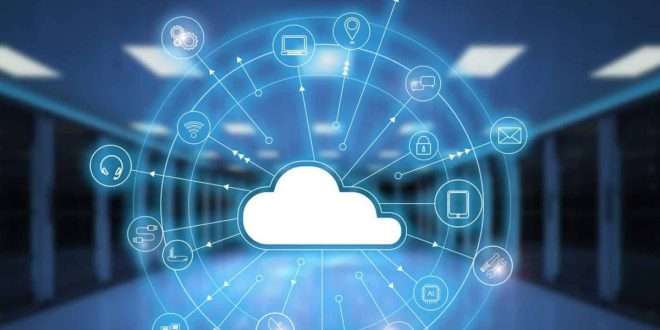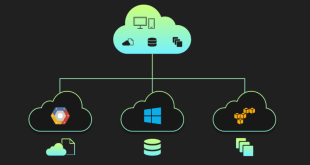In today’s fast-paced digital landscape, the rise of the Internet of Things (IoT) has been nothing short of revolutionary. As IoT devices continue to proliferate across industries, the demand for seamless and real-time data processing has soared. This demand has paved the way for the edge cloud era, a transformative paradigm that is redefining how we perceive and utilize public cloud services. In this blog, we delve deep into the concept of the edge cloud era, its impact on public cloud services, and its implications for IoT and other cutting-edge technologies.
The Emergence of the Edge Cloud
Key Points:
- The traditional centralized cloud model has limitations in handling the massive data generated by IoT devices.
- The edge cloud brings computing resources closer to the data source, reducing latency and enhancing real-time processing capabilities.
- This decentralized architecture empowers organizations to scale efficiently while ensuring data security and compliance.
The edge cloud represents a shift away from the conventional centralized cloud infrastructure. In the traditional model, data is transmitted from IoT devices to a centralized data center for processing and analysis. However, this approach faces challenges when it comes to handling the sheer volume of data generated by IoT devices, leading to increased latency and potential data bottlenecks.
The edge cloud, on the other hand, takes a distributed approach by bringing computational resources closer to the data source. This means processing and analysis occur at the edge of the network, significantly reducing data transmission time and enabling real-time insights. With edge cloud architecture, organizations can swiftly respond to data-driven insights, optimize processes, and deliver enhanced user experiences.
Advantages of the Edge Cloud Era
Key Points:
- Reduced latency leads to faster response times, critical for time-sensitive applications like autonomous vehicles and telemedicine.
- Lower bandwidth requirements result in cost savings and improved network efficiency.
- Enhanced data privacy and security, as sensitive information stays closer to its source.
The edge cloud era offers numerous advantages that are propelling its adoption across industries. One of the most significant benefits is reduced latency. For time-sensitive applications like autonomous vehicles or remote surgeries, even milliseconds of delay can be critical. Edge cloud computing ensures that data processing happens locally, leading to faster response times and enhanced user experiences.
Additionally, the edge cloud’s distributed architecture reduces the need for extensive bandwidth, resulting in cost savings and improved network efficiency. By processing data locally, organizations can significantly reduce the amount of data transmitted across the network.
Moreover, with sensitive data staying closer to its source, the edge cloud enhances data privacy and security. This is particularly crucial for industries like healthcare and finance, where stringent compliance regulations dictate how data should be handled.
Edge Cloud and Public Cloud Synergy
Key Points:
- The edge cloud complements the public cloud, forming a powerful hybrid cloud infrastructure.
- The public cloud handles non-real-time, large-scale data storage and analytics.
- Edge computing handles real-time data processing and enables intelligent decision-making at the edge.
Contrary to the notion that the edge cloud competes with the public cloud, these two paradigms work in harmony, giving rise to a potent hybrid cloud infrastructure. The public cloud remains the go-to solution for non-real-time data storage, large-scale analytics, and other computationally intensive tasks.
On the other hand, the edge cloud plays a crucial role in handling real-time data processing and enabling intelligent decision-making at the edge. This collaboration between the edge cloud and public cloud offers organizations the best of both worlds – the scalability and processing power of the public cloud, combined with the low latency and real-time capabilities of the edge.
Real-world Examples of Edge Cloud Applications
Key Points:
- Edge cloud finds application in various industries, including manufacturing, healthcare, and retail.
- In the manufacturing sector, edge cloud enhances predictive maintenance, leading to reduced downtime and increased efficiency.
- In healthcare, the edge cloud enables remote patient monitoring and telemedicine, bringing medical care closer to patients.
- In retail, edge cloud powers real-time inventory management and personalized shopping experiences.
The edge cloud’s impact can be witnessed across diverse industries, each leveraging its capabilities to improve processes and user experiences. In the manufacturing sector, edge cloud enables predictive maintenance, where sensors at the edge continuously monitor equipment health and performance. This data is then analyzed locally, allowing organizations to schedule maintenance proactively, reducing downtime and increasing overall efficiency.
In healthcare, the edge cloud plays a pivotal role in remote patient monitoring and telemedicine. By enabling real-time data transmission and analysis from wearable health devices, healthcare providers can remotely monitor patients’ vital signs and respond promptly to any anomalies.
In the retail industry, the edge cloud facilitates real-time inventory management and personalized shopping experiences. Beacons and sensors in stores collect data on customer preferences and behaviors, allowing retailers to offer personalized product recommendations and promotions in real-time.
Edge Cloud and IoT Security
Key Points:
- The edge cloud introduces new security challenges due to distributed computing and increased attack surface.
- Encryption and secure communication protocols are vital to protect data at the edge.
- Implementing security best practices at the device and network levels is crucial to ensure overall data integrity.
While the edge cloud offers immense benefits, it also introduces new security challenges. With computational resources distributed across multiple edge devices, the attack surface increases, making the edge cloud vulnerable to potential cyber threats.
To address these concerns, robust encryption and secure communication protocols are paramount. Data transmitted between devices and edge nodes must be encrypted to prevent unauthorized access. Additionally, implementing security best practices at the device and network levels is crucial to ensure overall data integrity.
Edge Cloud’s Role in the Future
Key Points:
- The edge cloud’s significance will only grow as IoT and other edge-enabled technologies continue to advance.
- Edge AI will drive even more sophisticated and real-time decision-making capabilities.
- Edge cloud will become an integral part of 5G networks, delivering ultra-low latency and unlocking new possibilities.
As IoT and edge-enabled technologies continue to evolve, the edge cloud’s role will become increasingly vital. Edge AI, which combines edge computing with artificial intelligence, will power even more sophisticated and real-time decision-making capabilities. This will lead to groundbreaking advancements in various fields, including autonomous vehicles, smart cities, and healthcare.
Furthermore, with the imminent rollout of 5G networks, the edge cloud will play a pivotal role in delivering ultra-low latency, making the most of the high-speed connectivity. This will unlock new possibilities, driving innovations and shaping the future of technology.
Final Words
The edge cloud era is ushering in a new era of possibilities for public cloud services, particularly in the context of IoT and other cutting-edge technologies. By bringing computational resources closer to the data source, organizations can harness the power of real-time processing, reduced latency, and enhanced security. The synergy between the edge cloud and public cloud creates a robust hybrid infrastructure, ensuring optimal data management and analysis.
Commonly Asked Questions
Q1: How does the edge cloud improve IoT applications?
A1: The edge cloud reduces data transmission time and enables real-time data processing, leading to faster response times and improved user experiences in IoT applications.
Q2: Is the edge cloud secure for sensitive data?
A2: Implementing strong encryption and security protocols at both the device and network levels ensures data security and integrity in the edge cloud.
Q3: What industries benefit the most from the edge cloud?
A3: Industries such as manufacturing, healthcare, and retail benefit significantly from the edge cloud’s capabilities in predictive maintenance, remote patient monitoring, and real-time inventory management.
Q4: How does edge cloud architecture complement the public cloud?
A4: The edge cloud handles real-time data processing and decision-making at the edge, while the public cloud manages non-real-time data storage and large-scale analytics.
Q5: What role will edge cloud play in the future with the advent of 5G?
A5: The edge cloud will become an integral part of 5G networks, delivering ultra-low latency and enabling new possibilities in technologies like autonomous vehicles and smart cities.
 webfily
webfily



